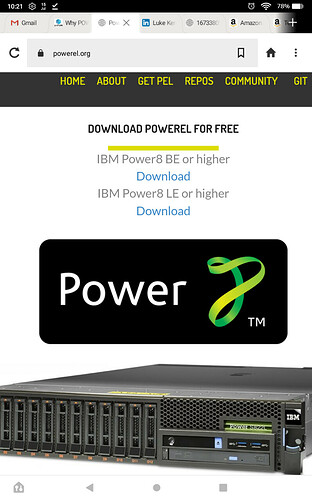Toshaan kindly took some considerable time to explain this to me, in addition to the things I had already picked up about S.E Asia - China, Japan, India, Malaysia etc - still using VME Bus for 60-year-old Industrial Control systems that are so simple electronics that they are easy to maintain and repair and consequently do not need “replacing with something new” (VME Bus is BE).
The following simple statement is incredibly important:
Packet parsing of the IP Protocol is in BE order.
For banking, high-frequency trading, power-efficient routers and the gambling industry where they allow bets to be placed right down to the last millisecond, being able to parse TCP/IPand UDP/IP packets as fast as is possible is extremely important.
When the entire CPU is LE-only and the entire TCP/UDP stack has to be software-parsed before you can read or write it, it should be obvious that such software-parsing is completely unacceptable in such business environments.
what solution do they deploy because they are using Intel’s LE-only CPUs?
they use FPGAs or Custom ASICs to parse and perform full deep packet inspection in hardware, byte-reversing the entire stack up to ISO Layer 4 just so that the Intel CPUs do not have to do it in software!
This goes a long way to explain why lowly 500 mhz MIPS SoCs are still the de-facto standard in Consumer-grade and Industrial Routers, sold literally in the hundreds of millions quantities.
putting it plainly: whomever is saying “Power should not support BE” simply has no experience (i.e. no customers) in the Networking or Industrial Control Industry.
India’s Fast Breeder Nuclear Reactor for example is still using 50 year old 16 mhz Motorola 68000 CPUs, and VME Bus control systems for the control of the servos on the nuclear rods, and to read temperature, pressure and other sensors.
the absolute last thing in the world that they want there is to modify the software source code, inserting byte-reversing instructions right at the critical point of reading temperature or pressure sensor data and getting corrupted data due to a previously unforeseen 16/32 type-conversion error, or sending a command to the servos that smashes the uranium rods into the reactor at 256x the speed because they missed a byte-reverse Store on a 16-bit Memory-Mapped VME-Bus command!
India’s Nuclear Scientists and Engineers take at least 10 years to do a full “fail-safe” safety review and audit of any changes of components or systems in their Reactor. I got a chance to briefly speak to them in 2018 and advised them for god’s sake don’t use unleaded solder because unleaded solder grows whiskers over a 12-15 year period, causing short-circuits, and those VME Backplane Control boards are in service a lot longer than that.
This is an extreme case of a much more prevalent usage of VME (a BE memory and peripheral Bus) than many people realise, because it’s just not talked about in the West.
bottom line: cutting out BE from the Power ISA would be an absolutely catastrophic mistake.
remember: many customers and users cannot talk publicly about what they do and why they have picked whatever Hardware they have picked. it is therefore down to us to “Game-scenario”, requiring quite considerable empathy, to imagine what it is that they themselves cannot say.
Summary: NXP/Freescale. 32-bit. BE. Embedded. low-clock rate. Aerospace, Automotive, Industrial and Networking. FlexBus (hybrid VME / MCU8080). connect the dots.



